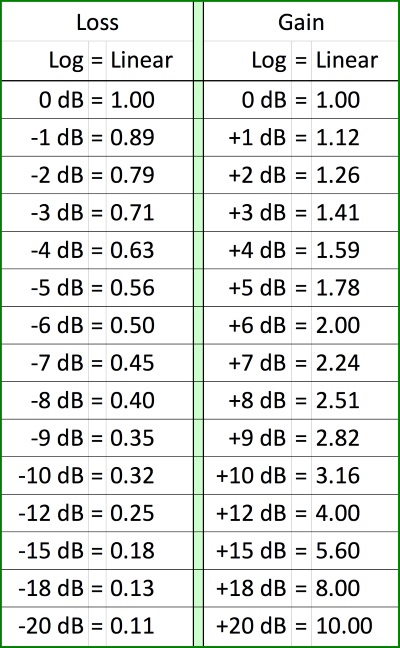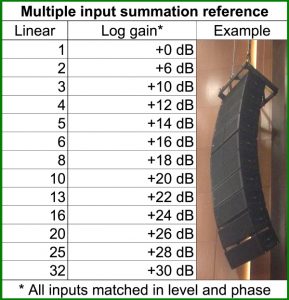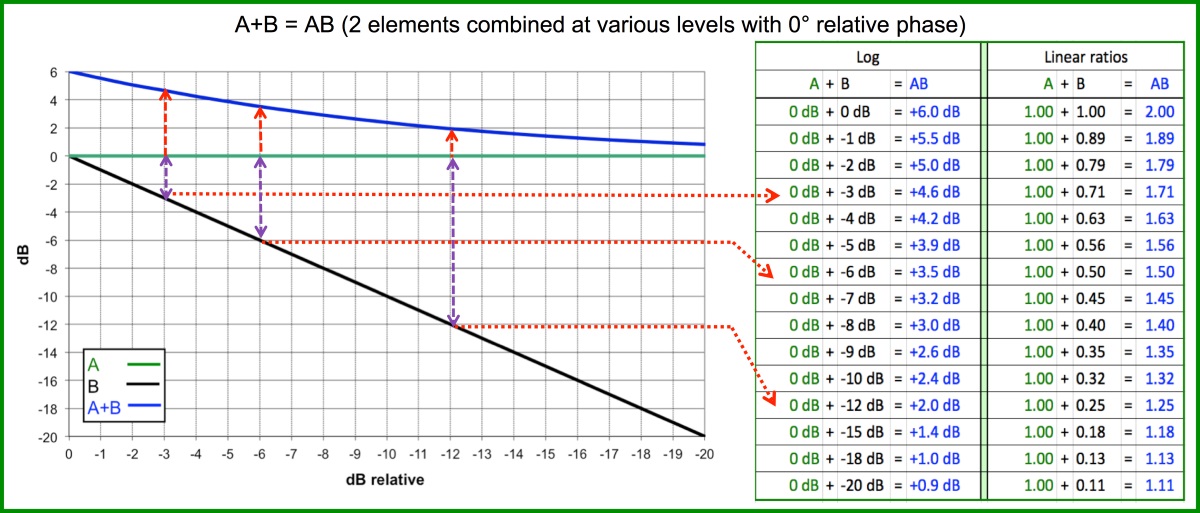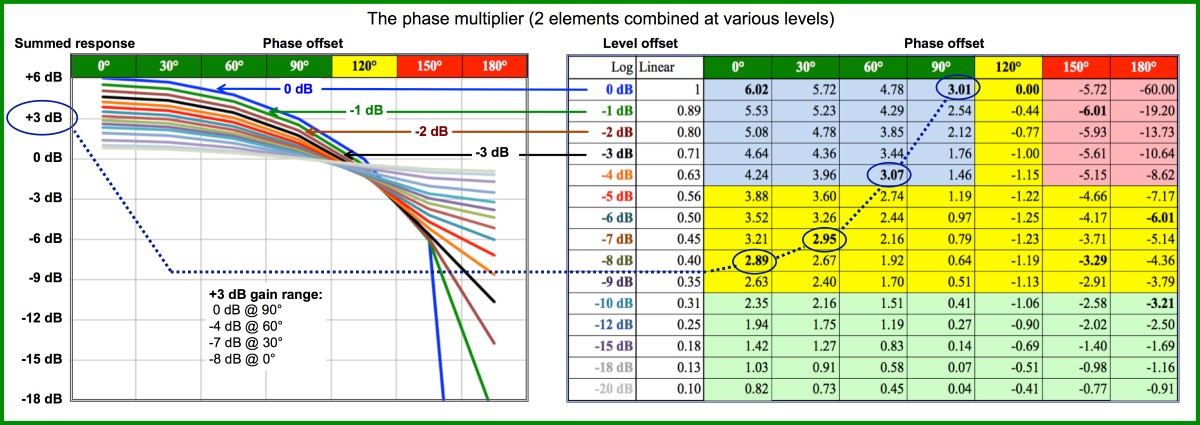
We memorized that 4:1 = +12 dB but what about three boxes (+9.5 dB) and five boxes (+14 dB)?
The log/linear decoder ring is the 20log10 scale, which I will translate to simplified prose as 20 dB (log) = 10x (linear). How do you make your sound system 20 dB louder? Get 10x as many boxes. You can use this formula in Excel “= 20*(LOG (linear ratio))” or keep a copy of the chart shown in Figure 2.

OK – so now we can add boxes to our system and have a good idea about how much SPL capability we’re gaining. Let’s try a few. Go from four to eight loudspeakers. That’s a 2:1 ratio, so we’ve gained 6 dB. How much more can we get if we add two more, going from eight to 10 loudspeakers?
That’s a ratio of 10:8 (1.25) which translates to +2 dB. We know that adding those two boxes costs an additional 25 percent, but the good news is we got 25 percent more SPL (+2 dB = +25%, i.e., a ratio of 1.25).
Adding two boxes doesn’t necessarily translate to gaining 2 dB. If 1 we go from 1 box to 3 we gain 9.5 dB (3:1 ratio). If we go from 18 boxes to 20 we gain just 1 dB (1.1:1 ratio), shown in Figure 3.

Oops, sorry but we got “value engineered” and lost a box. Going from 10 down to nine is a ratio of 0.9, a loss of 1 dB, and yet we are still 7 dB over where we started with 4 boxes (9:4 ratio = 2.25 = +7 dB). Getting comfortable with this yet? Good. The next step is dealing adding elements that are not matched in level.
What happens when we sum multiple signals at different levels?
Let’s add up 4 loudspeakers whose levels are offset in 3 dB increments. We can write this out as 0 dB + (-3 dB) + (-6 dB) + (-9 dB) = ?? Did you come up with + 8 dB? No? Well, here’s how you can: Translate it to 1 + 0.7 + 0.5 + 0.35 = 2.55 (which translates to +8 dB).
Now that’s a hard one so let’s go to something simpler. Let’s start with one loudspeaker and add half a box. Sounds like we might need a saw but this could be a loudspeaker that is turned down 6 dB in level (1/2) or one that has 6 dB less SPL capability (Figure 4).

We will calculate for 1.5 loudspeakers. This would be a classic single box main with a down fill or side fill that throws a shorter distance. In log form this would read “0 dB + (-6 dB) = +3.5 dB. In linear form it reads 1 + 0.5 = 1.5 (which decodes to +3.5 dB). The log coded version reads like gibberish when we try to add the numbers up. When we see 0 + (-6) our brains trick us toward answers like -3 (the average of 0 and -6) or other wrong answers such as -6.
The dB scale is good for a lot of things – but adding up inputs is not one of them. Decode each element back to linear, add them up and then re-encode it back to log and we are good to go. Now look back at the 4-input equation at the start of this and the 8 dB answer is no longer mysterious.
What happens when we sum multiple signals with different phase values?
A lot. Recall from the first question in this article that the range of outcomes for two-input summation (correlated signals at equal levels) ranges from +6 to -60 dB. The range of outcomes is governed by the relative phase between them: 0 degrees yields the +6 dB and 180 degrees yields the -60 dB. The +6 dB limit is a hard and fast rule but the -60 dB downside is an approximation that depends on the local noise floor.
It’s easy to think of phase addition and subtraction in binary terms but it’s actually a continuous function. The middle milestones include:
A) 50-degree phase offset: +5 dB addition (a memory helper I learned from Merlijn van Veen)
B) 90-degree phase offset: +3 dB
C) 120-degree phase offset: +0 dB (one loudspeaker for the price of two!)
D) 150-degree phase offset: -6 dB (entering the area of strong cancellation)
At the end of the day we find an entire family of summation values with changing amplitude and phase relationships. There’s only one way to get perfect addition (0 dB relative level and 0-degree relative phase) and one way to get perfect subtraction (0 dB relative level and 180-degree relative phase). There are, however many, many combinations that can yield 3 dB (shown in Figure 5) and other interim values.

